
Yes, this KPI of the professions health looks better, but the cost to educate veterinarians is still out of sync with the publics value of their services.

Raised in rural Orange County, California, Dr. Dicks began his agricultural career working in the Irvine Companys vegetable fields and ranches. He obtained degrees in Biochemistry and Animal Science from California Polytechnic State University in 1975.Dr. Dicks traveled to Kenya in 1976 to serve three and a half years with the U.S. Peace Corps as a chemistry teacher. During his tenure, he visited many of the local farms and developed technologies to provide water and energy to the rural communities. In 1978, he received funding from The Ford Foundation, the humanitarian agency CARE and the National Christian Council of Kenya to establish a rural cooperative to assist in the development and construction of water delivery and energy production technologies for rural communities.He obtained his masters degree working on a waste-to-energy project in Tunisia and his doctorate from the University of Missouri in Agricultural Economics, specializing in natural resource policy and international development.From 1984 to 1989, Dr Dicks worked with the U.S. Department of Agricultures (USDA) Economic Research Service. In 1989, he was a policy specialist responsible for developing and implementing the first Conservation Title in a U.S. Farm Bill. Dr. Dicks was also initiated into USDAs Aquaculture Industry Situation and Outlook program as well as the Industrial Crops and Products Situation and Outlook program. Dr. Dicks was hired by Oklahoma State University (OSU) in 1989 to work in the area of agricultural policy. He was the director of the Great Plains Agricultural Policy Center from 1991 to 1997 and director of the Center for International Trade and Development from 2009 to 2012. He retired from OSU as the Wes and Lou Watkins Chair for International Trade and Development in 2013. Hes been married for 30 years and has three children. When Dr. Dicks isnt working, he likes to climb mountains, swim oceans, race motorcycles across the country and spend time with his family. He has two Australian shepherds, Jake and Maggie.

Yes, this KPI of the professions health looks better, but the cost to educate veterinarians is still out of sync with the publics value of their services.
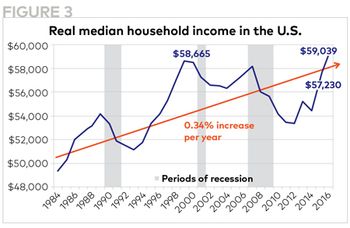
While there are a few ongoing and significant concerns among the economic indicators, most signs point to 2018 shaping up well for veterinarians and team members.
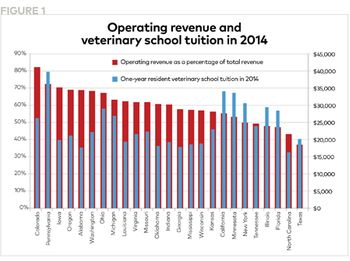
Its easy to presume that veterinary colleges receiving lots of public support can charge lower tuitionbut is it true? The AVMA Econ team decided to find out.

Yes, price and income affect the demand for veterinary services. But in the case of nutrition, education may be just as important.
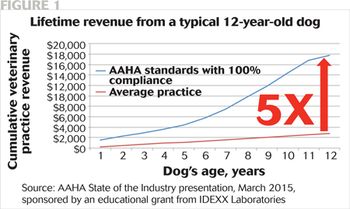
Economic indicators for veterinary medicine are not all rosy. And still private equity is pouring in to buy veterinary practices. Heres where they see potential.

Veterinary firms are becoming more concentratedfewer in number and larger in size. Heres a look at why its happening and what the impact might be.

Based on the financial data on hand and past trends, heres what I think the new year could bring for our nations veterinary practices.

Rising demand for veterinary services should not lead to a call for more veterinarians. Here's why.

The answer? It's complicated. Let me explain.

... the AVMA starting salary calculator showing that looks at many factors. And that does NOT mean any female DVM should ask a practice owner for less money than her male peers.

The Department of Education can deny some schools federal loan dollars if their graduates dont wind up with a decent income. What are the implications for the veterinary profession and its off-kilter debt-to-income ratio?
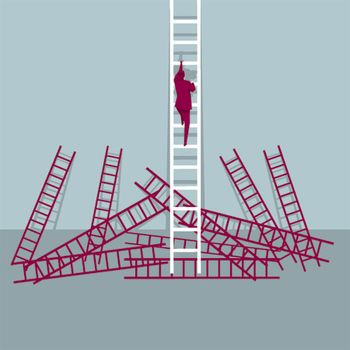
The bad news? Veterinary debt-to-income levels are on a fast track to disaster. The good news? Our professionwide DIR might improve with these strategies.
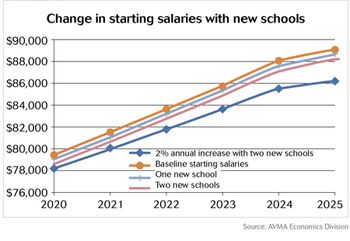
Opening new veterinary schools could bring about lower than optimal applicant-to-seat ratio.
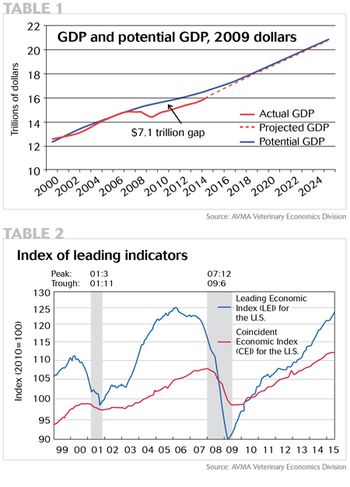
Take a look at economic indicators so your veterinary practice is prepared.
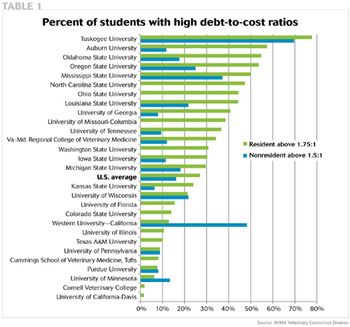
Veterinary students in general are managing their debt within reason; solutions to this massive problem will have to come from elsewhere.
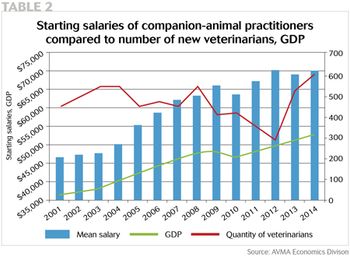
Examining why starting veterinary salaries vary from year to year.
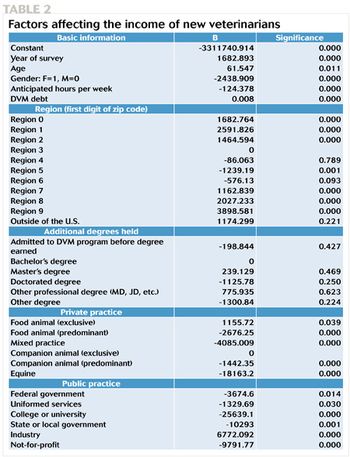
You dont need a crystal ball, but you will need to dust off your statistical analysis skills.
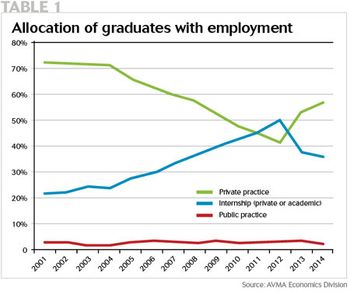
Data suggest that new graduates should steer clear of internships that don't offer a clear path to advancement.
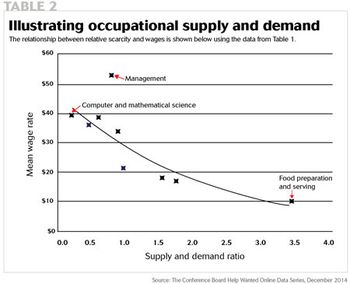
Market data reveals which practitioners are in higher demand-and who's earning more money.

Different ways to calculate this important statistic present an inconsistent outlook on new grads financial situation.
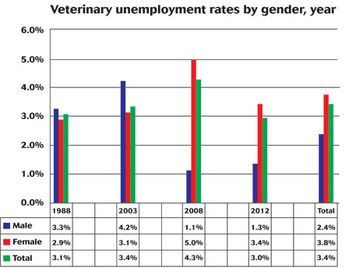
AVMA survey finds low veterinary unemployment, but many are working lessor morethan they prefer.
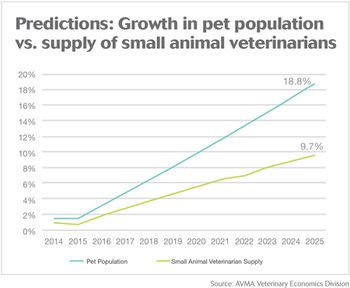
Forecasts predict an increase in GDP and consumers disposable income.
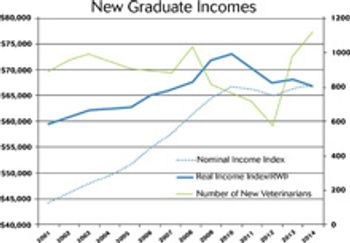
New data from the AVMA's Senior Survey suggests improving economic conditions in the veterinary market.

Looking at a different industry can help us see the forest despite the trees.

Robust participation from veterinarians in AVMA information gathering efforts will help target, eliminate inefficiencies in the market.All wish to possess knowledge, but few, comparatively speaking, are willing to pay the price. -Juvenal, Roman poetIread this quote and thought, how apropos! The American Veterinary Medical Association (AVMA) has surveyed its members three times this year, and fewer than one in five responded to the research requests.

AVMA committed to developing a robust picture of veterinary profession's economic situation.

Published: July 1st 2014 | Updated:

Published: August 1st 2014 | Updated:

Published: September 1st 2014 | Updated:
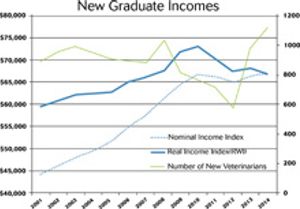
Published: December 1st 2014 | Updated:
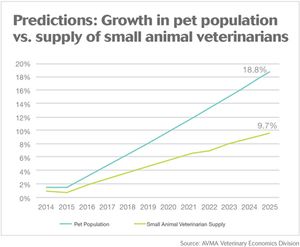
Published: December 17th 2014 | Updated:
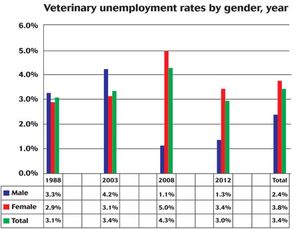
Published: February 1st 2015 | Updated: